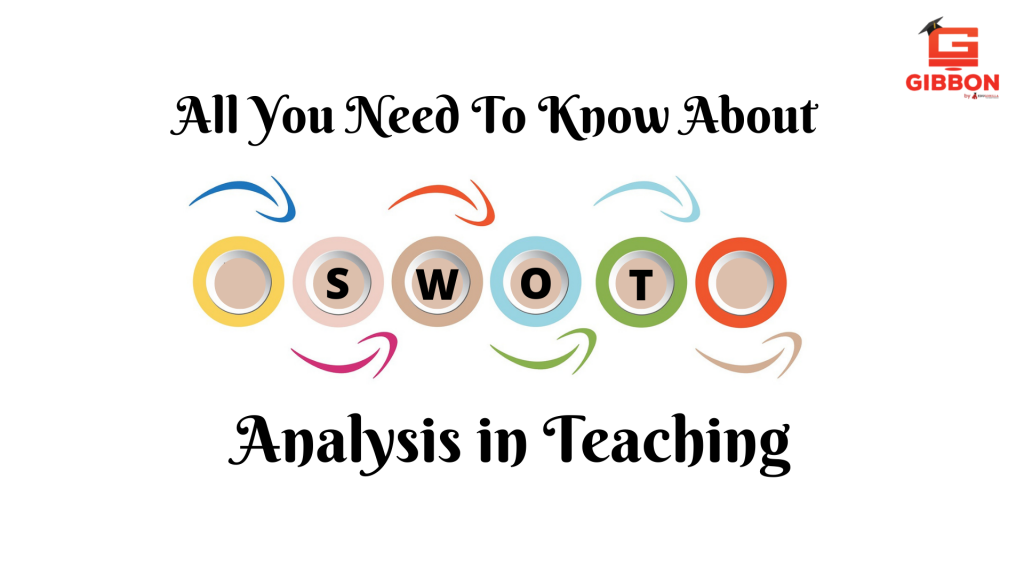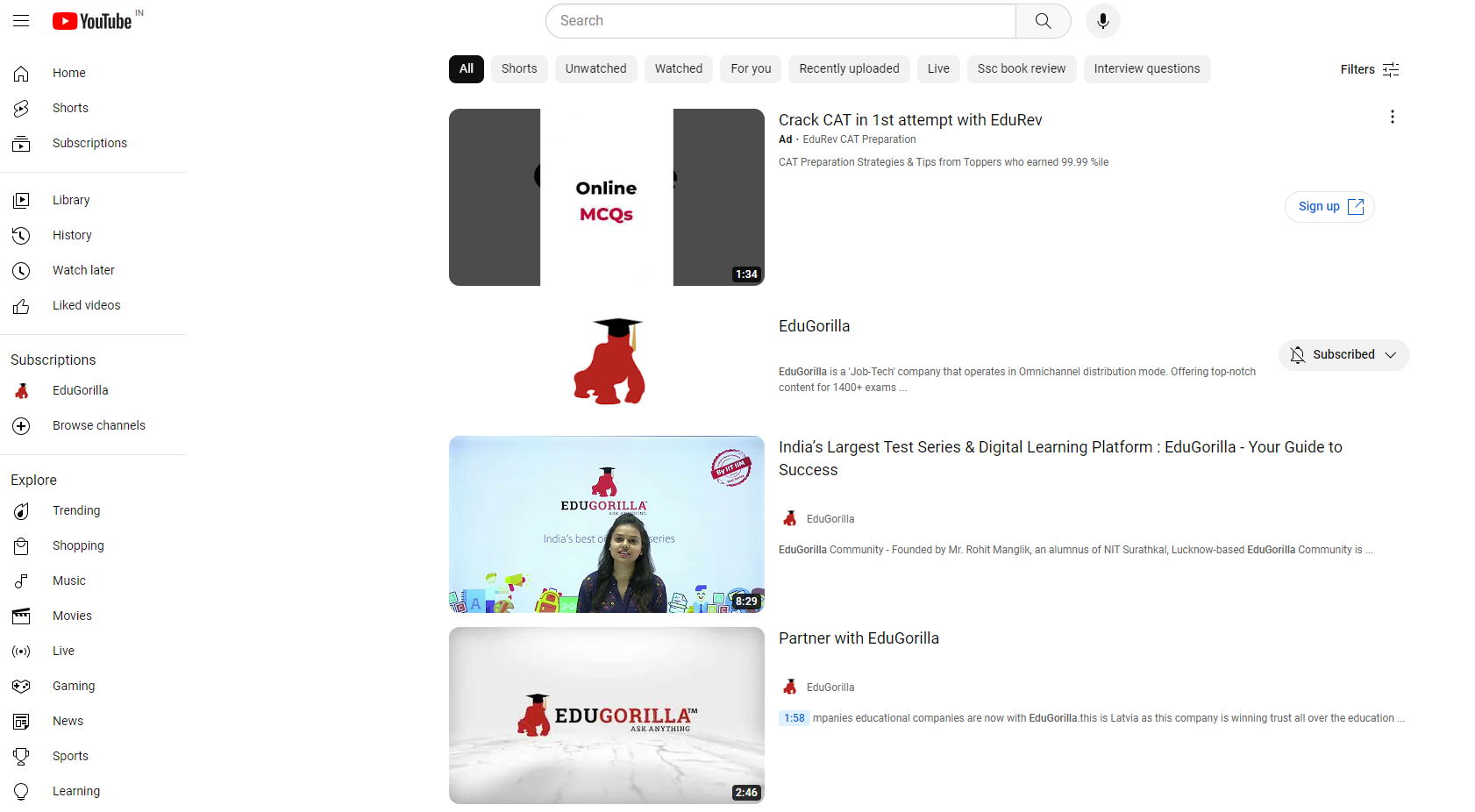SWOT stands for Strengths, Weaknesses, Opportunities, and Threats. A SWOT analysis is a basic technique that may help faculty begin a real change in a program and use the data to improve the program.

SWOT analysis is a tool used mostly by corporations for planning and issue resolution. A SWOT analysis (also known as a SWOT matrix) is a systematic planning tool used to analyze the project’s strengths, weaknesses, opportunities, and threats. SWOT analysis may be a beneficial technique for instructors and students to use to analyze oneself more structurally if it is properly planned, rehearsed, and practiced.
- SWOT analysis in teaching can be performed on an institution, a location, a person, a project, or a strategy.
- As an individual learner, a group, or an institution, we confront numerous hurdles in acquiring competence while accomplishing our goals, and we frequently abandon our path of action along the road, causing our career progress to fall short of our expectations.
- As a result, we stay inferior to our peers and those responsible for our actions.
- As a result, this analysis may be incredibly beneficial not only for instructors but also for students, as SWOT provides favorable baseline information for a group of people/learners or institutions seeking a vision for their future or analyzing an issue.
Strengths
The areas where the institution excels are referred to as its strengths. To discover the strengths, we must analyze the areas or elements in which a comparable organization or program excels. Curriculum, faculty, leadership, school ties, and/or reputation may be strengths. The methodology employed, administration, and accountability may also be strengths.
Weakness
Here, we need to analyze what individuals in other areas are likely to identify as flaws in you. So many obstacles related to individual progress in our careers hold us back and we are unable to overcome them. Understanding your shortcomings allows us to focus on certain areas or aspects that need to be improved.

Opportunities
Opportunities are trends that an organization or institution may capitalize on. These are external circumstances or conditions that may have a beneficial impact on your organization’s ability to achieve a targeted objective or purpose. Examining new trends and breakthroughs can aid in the identification of opportunities.
Threats
Threats are external sources that have a detrimental impact on the organization’s operations. As a teacher, one must learn to recognize the existing risks that operate as roadblocks to completing his assignment using SWOT analysis in teaching.
Applications of the SWOT Analysis
- Your Students can use the tool to identify their own strengths and weaknesses, as well as areas of opportunity and threat.
- This understanding will assist students in comprehending the aspects that influence their learning process and performance.
- A student, for example, may have an excellent memory, but his problem is that he is easily distracted. Understanding this may assist the learner in overcoming his handicap via different adjustments and modifications.
- Consider a student who is completing a book report. Using SWOT analysis assists him in identifying a topic of interest, ensuring he has appropriate information that is easily accessible online and via the library, and having enough time and ideas to make a distinctive report (strengths and opportunities).
- Students can utilize the SWOT analysis tool to provide comments on their teaching skills, as well as the success of various strategies and technologies employed in the classroom. It assists a teacher in determining which strategies should be maintained and which should be adjusted or updated.
Implementation of SWOT Analysis
A SWOT analysis is a high-level, critical-thinking practice for students and teachers alike. This method may be used in any educational context. Teachers can perform a SWOT analysis on their specific classrooms, teacher preparation program, methodological concerns, and internship experience. Educators frequently have a hazy understanding of their SWOT analysis.
These topics can be discussed in meetings with students, other faculty, or mentor teachers, as well as the school organization as a whole. However, most software enhancement recommendations are never implemented. Implementing a SWOT analysis should be viewed as simply one component of strategic planning.
Process of Conducting a SWOT Analysis
- The steps for conducting a SWOT analysis are straightforward and basic. In most circumstances, however, the techniques are decided by the individual performing the SWOT analysis:
- Determine the group with whom we will collaborate: For example, one specific class, all students enrolled in a certain program, or a subset of advises;
- Explain the activity’s objective and goal.
- Each participant will identify their own strength and record it on the sheet of paper supplied to them.
- A separate sheet of paper will be used to trace out the flaws. Lack of diversity in teachers, obsolete buildings, morale, restricted funding, outdated curriculum, the timing of when courses are provided, and out-of-date software are examples of problems.
- The institution’s and organization’s aims and missions should be addressed while creating a SWOT analysis.
- The SWOT analysis should show where you are now and where you intend to go in the future.
SWOT Analysis for Teachers
A SWOT analysis of a teacher education program, or any program, might be the impetus for reform. It is one of the tools that may be used in the strategic planning process. SWOT analysis may be utilized as a useful method to analyze oneself more structurally for the entire study of a teacher’s professional abilities.
The SWOT analysis gives a specific assessment of how your students view the program. Contextual elements such as students, topic matter, and societal influences may lead to a SWOT analysis being deceived. Teachers will be able to enhance their teaching approaches by taking into account the upgrading of their knowledge in the field of teaching-learning if they are aware of their strengths.
ABOUT GIBBON
Gibbon is a Plug and Play solution offered by EduGorilla, for anyone with a skill to teach. Gibbon helps you to take your classes online and earn independently.
- Gibbon gives you the ability to conduct & record LIVE classes, host unlimited video courses, provide online mock tests, and conduct online tests with LIVE proctoring abilities.
- Gibbon also provides you ready-made content of 1600+ Competitive, Entrance, and Academic exams from around the country.
- Gibbon helps you reach out to more students online and get a complete marketing setup.
- We have helped more than 3000 Brands, 10000 Institutes, 20000 Teachers and 2 Crore Students, transform their education and future.
Gibbon stands for “Online-Ready Teachers for a Future-Ready India”.To get started, book your free demo now.






